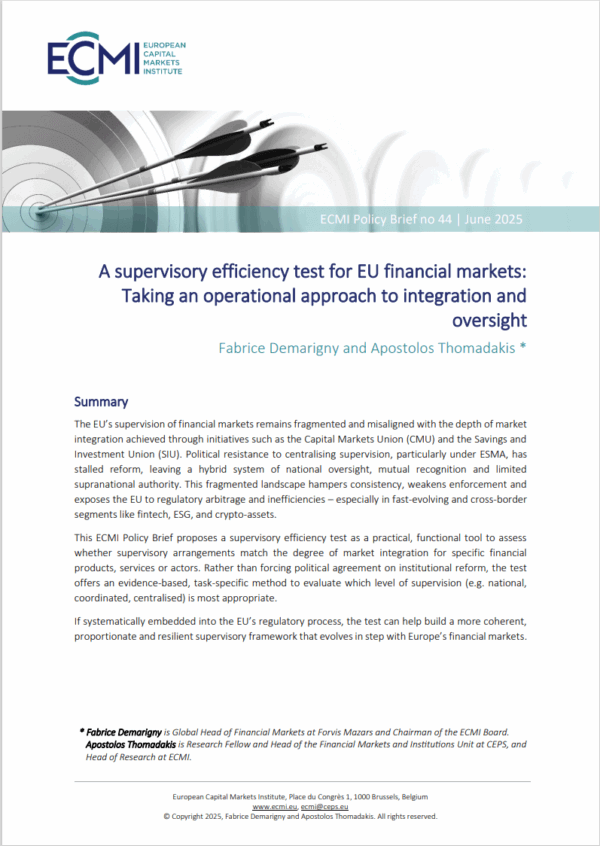The Comprehensive Assessment conducted by the European Central Bank (ECB) represents a considerable step forward in enhancing transparency in euro-area banks’ balance sheets. The most notable progress since the previous European stress test has been the harmonisation of the definition of non-performing loans and other concepts as well as uncovering hidden losses, which resulted in a €34 billion aggregate capital-charge net of taxes. Despite this tightening, most banks were able to meet the 5.5% common equity tier 1 (CET1) threshold applied in the test, which suggests that the large majority of the euro-area banks have improved their financial position sufficiently that they should no longer be constrained in financing the economy. As shown in this CEPS Policy Brief by Willem Pieter de Groen, however, the detailed results provide a more nuanced picture: there remain a large number of the banks in the euro area that are still highly leveraged and in many cases unable to meet the regulatory capital requirements that will be introduced in the coming years under the adverse stress test scenario.
Willem Pieter de Groen is Researcher in the Financial Markets research unit at CEPS.












